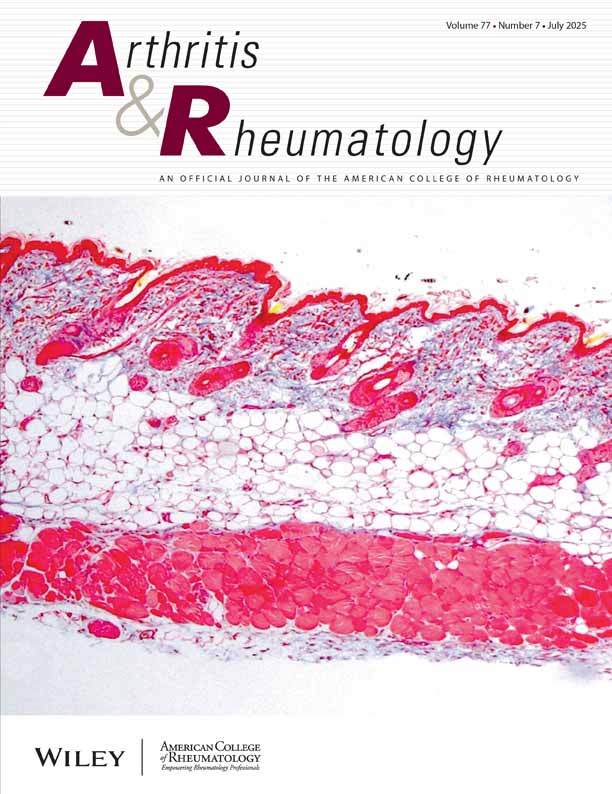Familiality and co-occurrence of clinical features of systemic lupus erythematosus
Abstract
Objective
To evaluate familiality of 15 clinical and laboratory features in systemic lupus erythematosus (SLE)–affected sibpairs, and to estimate correlations with the age at SLE diagnosis in affected sibpairs and parent–offspring pairs.
Methods
Concordance rates and sibling risk ratios were used as indicators of familiality for 15 manifestations of SLE. Pearson's correlations and paired t-tests were used to compare the age at SLE diagnosis in affected sibpairs and in parent–offspring pairs.
Results
Increased sibling risk ratios (1.9–3.9) for thrombocytopenia, discoid rash, neurologic disorder (defined as seizure or psychosis), and hemolytic anemia were observed in 159 SLE-affected sibpairs. Among these clinical features, paired expression of hemolytic anemia plus thrombocytopenia and hemolytic anemia plus neurologic disorder appeared to be more frequent in 709 SLE patients than would be expected by chance (P < 0.00001 and P < 0.007, respectively). The ratio of the presence of both hemolytic anemia and neurologic disorder was ∼13 times higher in the younger affected sib than in the older affected sib (P < 0.02). Familiality of patient age at SLE diagnosis, as observed by relative correlations, was greater in 125 affected sibpairs (r = 0.67, P < 0.0001) than in 37 affected parent–offspring pairs (r = 0.47, P = 0.003). The median ± SD age at SLE diagnosis was significantly lower in offspring (21.5 ± 10.1 years) than in their parents (41.6 ± 15.8 years) (P < 0.0001) but was not different in sibpairs. The combined non-Caucasian sibpairs had a younger mean age at SLE diagnosis compared with Caucasian sibpairs (P = 0.014).
Conclusion
Evidence for familiality of thrombocytopenia, discoid rash, neurologic disorder, hemolytic anemia, and co-occurring neurologic disorder plus hemolytic anemia in SLE was observed in 159 affected sibpairs. Familiality of the age at SLE diagnosis in relative pairs suggests that shared genes and/or shared environmental exposures impact disease susceptibility. Shared immediate environmental triggers appear less compelling, because the average time between dates of diagnosis was 11 years in parent–offspring pairs and 7.5 years in affected sibpairs. The significantly earlier age at disease diagnosis in offspring compared with their parents suggests that some forms of anticipation might play a role in susceptibility to SLE. Stratifying families by subphenotypes that are familial may reduce heterogeneity and facilitate identification of genetic risk factors for SLE.




